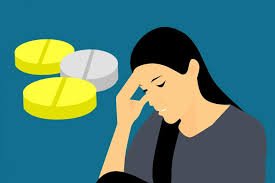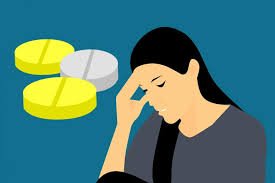Migraine headaches are more than just bad headaches—they’re neurological storms that can disrupt your entire day. This article breaks down everything you need to know about migraines: their real causes, warning signs, treatment options, and natural remedies that actually help. Learn how to recognize triggers, manage pain, and reduce migraine frequency without relying only on medication. Discover practical, science-backed tips to live with fewer migraines and more peace of mind.

What Exactly Is a Migraine?
Migraine Headache can hit with nausea, vomiting, and extreme sensitivity to light, sound, and even smell. They don’t just cause pain—they can shut down your ability to think, move, or work.
About 1 in 7 people worldwide experience migraine headache, and women are three times more likely to get them than men.
The Main Types of Migraine
Not all migraine headache look the same. Here are the key types:
- Migraine Without Aura – The most common type. Intense headache without warning signs.
- Migraine With Aura – Visual or sensory changes appear before pain (flashing lights, zigzag lines, or tingling sensations).
- Chronic Migraine – Occurs 15 or more days per month for at least 3 months.
- Menstrual Migraine – Triggered by hormonal changes around the menstrual cycle.
- Silent Migraine (Acephalgic) – You experience aura or symptoms without actual head pain.
- Hemiplegic Migraine – Rare, can cause temporary weakness on one side of the body.
- Vestibular Migraine – Causes dizziness, balance problems, or vertigo along with headache.
Early Warning Signs (The Prodrome Phase)
Many people feel a migraine headache coming before the pain starts. These are early “prodrome” signals:
- Mood changes (irritability or depression)
- Food cravings
- Neck stiffness
- Frequent yawning
- Light sensitivity
- Difficulty concentrating
Catching these early gives you a chance to prevent a full-blown attack.
Why Migraine Happens: Common Triggers and Causes
Migraine triggers vary, but the key causes often include:
- Hormonal Changes – Drops in estrogen before menstruation trigger migraines for many women.
- Stress and Anxiety – Emotional tension causes blood vessel changes in the brain.
- Sleep Issues – Too much or too little sleep disrupts brain balance.
- Dehydration – Even mild dehydration can spark head pain.
- Food Triggers – Chocolate, aged cheese, processed meat, alcohol, and MSG are common culprits.
- Caffeine Changes – Too much or sudden withdrawal can cause rebound pain.
- Weather and Pressure Changes – Sudden shifts in humidity or air pressure.
- Bright Lights and Loud Noises – Overstimulation of nerves.
- Medications – Overuse of painkillers or certain birth control pills.
- Genetics – If one parent has migraines, your risk increases by about 50%.
Bottom line: migraine is a combination of genetics, environment, and lifestyle.
Symptoms of Migraine You Shouldn’t Ignore
Typical signs include:
- Severe throbbing pain (often on one side)
- Nausea and vomiting
- Light and sound sensitivity
- Blurred vision
- Fatigue or dizziness
- Difficulty focusing
- Pain that worsens with movement
Some people also experience aura—visual disturbances, speech problems, or even temporary numbness before the headache begins.
Medical Treatments for Migraine
Let’s look at what modern medicine offers:
1. Pain-Relief Medications (Acute Treatment)
These work best when taken early:
- NSAIDs like ibuprofen or naproxen
- Triptans (sumatriptan, rizatriptan) — specifically target migraine pain
- Ergots — used when triptans don’t help
- Anti-nausea medications like metoclopramide
2. Preventive Medications
If you get migraines often (4+ per month), your doctor might suggest:
- Beta-blockers (propranolol, metoprolol)
- Antidepressants (amitriptyline)
- Anti-seizure drugs (topiramate)
- CGRP inhibitors (newer options like Aimovig, Ajovy)
3. Lifestyle & Therapy Options
- Botox injections (for chronic migraines)
- Acupuncture – helps relax nerve pathways
- Biofeedback therapy – teaches your body to handle stress
- Cognitive Behavioral Therapy (CBT) – reduces anxiety-related triggers
Natural Remedies That Actually Ease Migraine Pain
Medication helps, but it’s not the whole answer. Many people find real relief from simple natural habits and remedies.
Here are 10 proven natural approaches:
- Hydration First – Drink water consistently. Even mild dehydration can trigger migraines.
- Magnesium-Rich Foods – Almonds, spinach, avocado, and banana can help prevent attacks.
- Ginger Tea – Reduces nausea and inflammation during migraine attacks.
- Cold Compress – Apply an ice pack or cold towel to your forehead or neck.
- Dark, Quiet Room – Rest in a calm, dark space during pain.
- Essential Oils – Peppermint and lavender oils can ease tension and improve airflow.
- Consistent Sleep – Stick to a regular sleep schedule. Both oversleeping and lack of sleep are triggers.
- Caffeine in Small Doses – Can relieve pain early but avoid overuse.
- Yoga & Stretching – Improves blood flow and reduces muscle tension.
- Avoid Food Triggers – Keep a headache diary to identify what foods cause flare-ups.
Daily Habits That Help Prevent Migraines
Prevention is often easier than cure. Build these habits into your life:
- Eat balanced meals at regular times.
- Manage stress through breathing or mindfulness.
- Limit screen time and blue-light exposure.
- Don’t skip meals.
- Avoid alcohol and smoking.
- Get at least 7–8 hours of sleep nightly.
- Exercise moderately 3–4 times a week.
Even a simple 20-minute walk daily can help stabilize blood flow and lower migraine frequency.
When to See a Doctor Immediately
Seek medical help if:
- Your headache comes on suddenly and severely (“worst headache of your life”)
- You experience confusion, fainting, or vision loss
- Pain lasts more than 72 hours despite treatment
- You have migraines more than 15 days a month
- You notice new or unusual symptoms
These could indicate something more serious than a standard migraine.
Other Common Headache Types to Know
To understand migraines better, it helps to compare them with other headaches:
| Type | Pain Description | Duration | Triggers |
|---|---|---|---|
| Tension Headache | Dull, pressure-like pain on both sides | Hours to days | Stress, poor posture |
| Cluster Headache | Sharp, stabbing pain around one eye | 15–180 min | Alcohol, smoking |
| Sinus Headache | Deep, heavy pain in cheeks/forehead | Varies | Sinus infection or allergy |
| Rebound Headache | Daily pain from overusing meds | Chronic | Painkiller dependency |
Bottom Line
Migraines are not “just headaches.” They’re neurological events influenced by your body chemistry, stress, hormones, and environment. The goal isn’t only to stop pain but to understand your triggers and build a lifestyle that prevents them.
A mix of smart medication, consistent self-care, and natural remedies can make a huge difference. Track your symptoms, listen to your body, and take action early — that’s how you regain control over your mind and your days.

